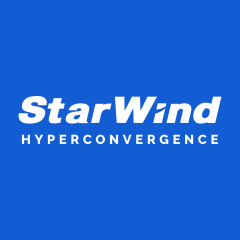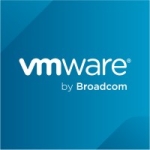What is our primary use case?
Our company's needs are simple, and I like redundancy, so I was looking for the least expensive way to achieve as close to full hardware redundancy as possible without breaking the bank.
I learned about vSAN technology, and it made sense to me to just get two hosts with identical hardware, and configure their storage as shared, providing full hardware redundancy (on top of the already partially redundant aspects of the hosts themselves), then just get a decent SAN for off-site DR backup storage (we settled on Synology's Flashstation for that), and I'm really glad we did.
How has it helped my organization?
StarWind's solution provided me the peace of mind knowing I had full hardware redundancy with my new servers and local storage, and it was less expensive than the VMware native license/solution would have been.
It has been rock solid from day one. I've engaged with their expert support multiple times for maintenance sessions, to upgrade their software, and once to migrate from their Windows Server-based appliance to their Linux version once it was ready. We have only ever had one issue during an upgrade that was quickly resolved by their engineer.
What is most valuable?
By far, the best features are the cost, implementation, and support. The VMWare equivalent license upgrade would have been quite a bit more than the StarWind solution, and the only additional hardware requirements were the dual 25GB fiber NICs needed for the storage Sync functionality.
They also worked with our preferred reseller (PCM at the time) and had our two brand new Dell hosts shipped to them first for pre-configuration, which they then turned around and shipped to us pre-configured and ready to go.
What needs improvement?
Implementation, maintenance, and support were and have been virtually painless, however, I would definitely like to see quite a bit more on the monitoring side of things.
I would really like to be able to see a lot more of what is going on under the hood metrics-wise. It would be great to be able to see at least a little bit more. Specifically, things like performance, bandwidth utilization of the synchronization connection, and how it impacts the overall performance of the hosts.
For how long have I used the solution?
I've used the solution for three years.
What do I think about the stability of the solution?
It has been extremely stable for the three years we've been running it. There hasn't been one operational hiccup and only one issue which happened during a support session performing an upgrade, which was quickly resolved by the engineer.
What do I think about the scalability of the solution?
Our needs are simple. Therefore, we only have ever used or needed two hosts. That said, it is nice to know that it can scale to clusters if we ever need to go that route, as unlikely as that seems right now.
How are customer service and support?
The few times I've ever engaged with technical support were for upgrades, and it was always pretty painless, with the one exception I mentioned before, where we had a problem with a host that ultimately required a hard reset. We're still not sure what happened to cause it to lock up, however, once it was back up everything was fine.
How would you rate customer service and support?
Which solution did I use previously and why did I switch?
I had looked at other vSAN technology in the past, however, the cost was beyond our budget, especially after factoring in the cost of the support needed, since I am not a storage engineer.
How was the initial setup?
The initial setup was easy. We simply had to unbox the servers, rack them, connect the cables, and turn them on. It was that simple.
What about the implementation team?
The initial setup was handled in-house - meaning, yours truly. All I had to do after firing them up was add the hosts to my existing vCenter server, migrate all of the VMs over to the new Hosts/Storage, and, once done, shut down and remove the old hosts from vCenter.
What was our ROI?
ROI is hard to quantify since we've never used anything else. That said, at least without it there would have been many thousands of dollars just for the licensing costs and appropriate support would have been even more than that. StarWind provides comprehensive support on everything, as long as you buy the hardware through them too.
What's my experience with pricing, setup cost, and licensing?
I'd advise users to do their due diligence, however, StarWind's technology works as advertised, at a much lower cost than the native VMware solution. Their licensing is simple and affordable, and their support is impeccable.
Which other solutions did I evaluate?
We considered VMware's native vSAN technology and may have gone with it if I hadn't found StarWind while searching for alternatives.
What other advice do I have?
If you are looking at a simple, affordable vSAN technology, you can't go wrong with StarWind.
Which deployment model are you using for this solution?
On-premises
Disclosure: My company does not have a business relationship with this vendor other than being a customer.















